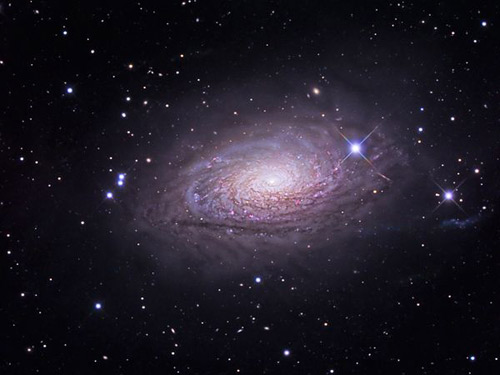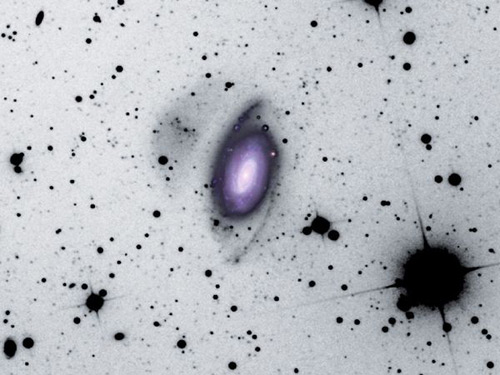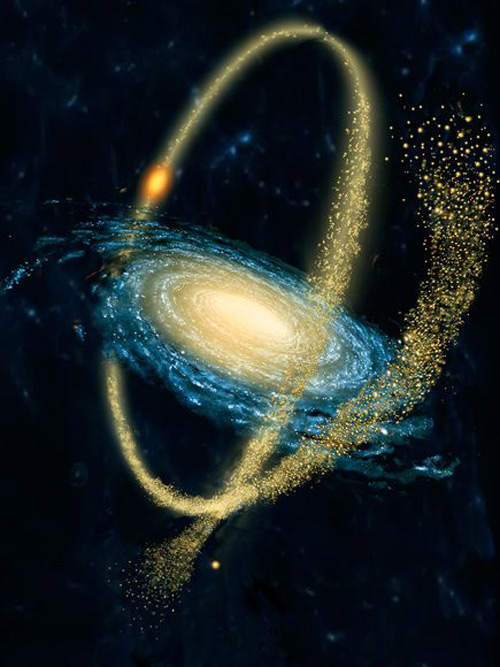They are big galaxies that swallow up smaller ones.

A fuzzy circle of dust and smoke is surrounding the sunflower galaxy. Larger spiral galaxies contain hundreds of billions of expanding stars by ' eating ' a smaller galaxy. The victim only consists of a few billion stars, too small for the size of the predator.
Because of its smaller size, the " eaten " galaxy will gradually be sucked into the enemy. Gravity will tear it apart and in a few billion years, the remainder will be only the strands of matter in the universe. After the next few billion years, the whole will become part of a giant spiral.
By studying this process and especially observing the strands of matter that exist around large galaxies, scientists will better understand the evolution of galaxies in the universe and somehow guess what be the future of the Earth.

In this picture, Sunflower flower is highlighted in the center. The bands of matter are clearly visible around it. This ill-fated galaxy is about 30 million light-years from Earth and is about 60,000 light-years across.

Dark ' arms ' and pale ' stars ' are surrounding a spiral galaxy. Scientists think they are the rest of a small galaxy that has been ' digested '. These arms have a mass of about 1 to 5% of the mass of a spiral galaxy and they can also be produced when two galaxies collide with each other.

A magnificent spectacle when smaller galaxies have been torn into yellow bands around the ' killer ' galaxy. Our Milky Way is also predicted to be a collection of about 100 to 200 smaller galaxies, all of which have been assimilated in this way.

This ' umbrella ' image is the remnant of a small galaxy that has been ' eaten '. It is located about 35 million light-years from Earth and is the brightest part of the small galaxy. It has been discovered since 1959 but recently identified as the remains of ' galactic meals '.

This is an image on a computer image of a small, torn galaxy forming small fringes around a large galaxy. In the universe there are countless small galaxies like this, they gradually disappear through the process of ' carnivorous ' and create large galaxies like our Milky Way.

The above galaxy image is shown in another form. It is clear that material ' arms ' are located around large galaxies. Studying both types of images helps scientists better visualize the evolution of galaxies.
 Van Allen's belt and evidence that the Apollo 11 mission to the Moon was myth
Van Allen's belt and evidence that the Apollo 11 mission to the Moon was myth The levels of civilization in the universe (Kardashev scale)
The levels of civilization in the universe (Kardashev scale) Today Mars, the sun and the Earth are aligned
Today Mars, the sun and the Earth are aligned The Amazon owner announced a secret plan to build a space base for thousands of people
The Amazon owner announced a secret plan to build a space base for thousands of people